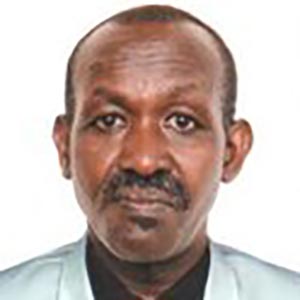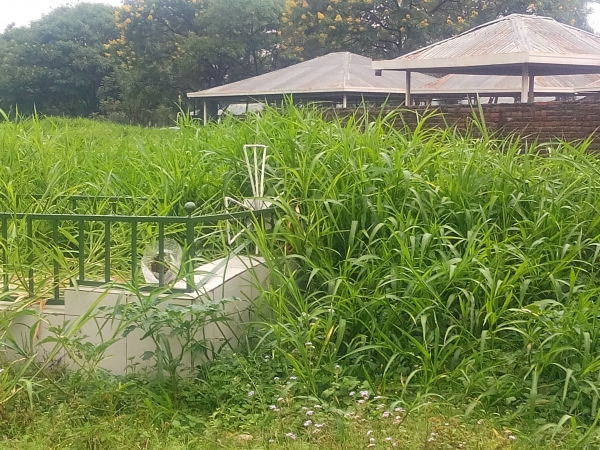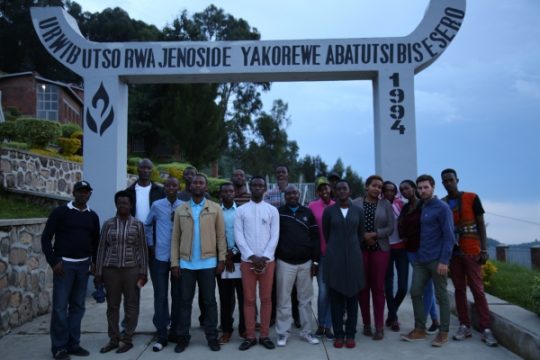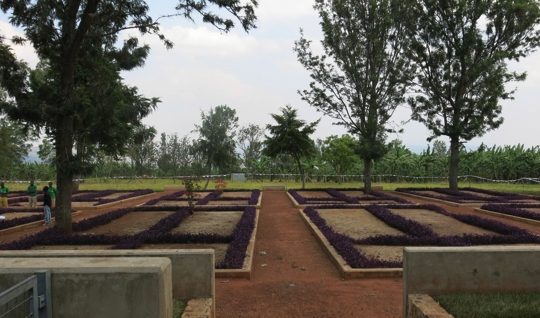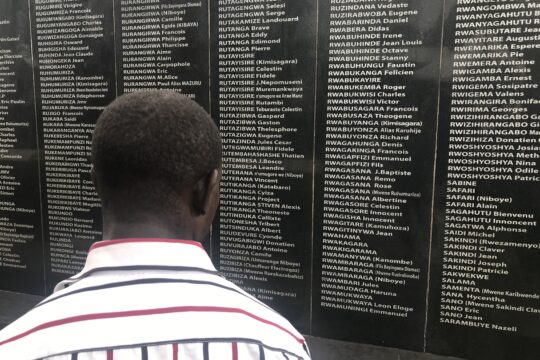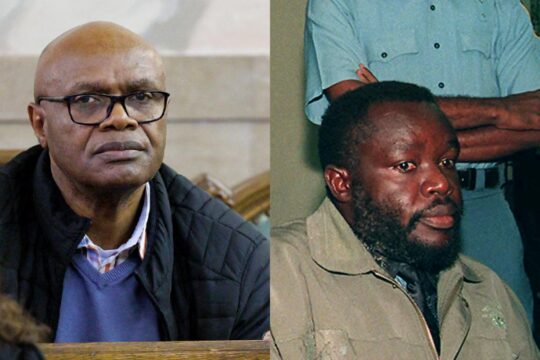At the time of the 1994 genocide, Gisenyi prefecture in northwest Rwanda was, like other prefectures, divided into communes. But the “Red Commune” does not appear on administrative maps of the time. It is not in fact an administrative entity but a cemetery where Tutsis were brought in 1994 to be killed and thrown into mass graves, or buried alive.
Seen from afar this place looks today like a big patch of waste ground. It covers some three hectares. Despite the overgrown grass, you can see as you approach the headstones that have been erected on some graves. According to the epitaphs, the dead identified here were buried before the 1994 genocide. This is the Ruliba cemetery, at the foot of Mount Rubavu, in the former commune of the same name. Here the inhabitants of Gisenyi, on the border next to Goma in former Zaire, came to bury their dead before 1994. “This was the final resting place for everyone who lived in Gisenyi when their life on earth came to an end,” explains genocide survivor Innocent Kabanda.
Tricking the Tutsis
But the story of the cemetery was to change quickly, just a few hours after the downing of President Juvénal Habyarimana’s plane on the evening of April 6, 1994, the event that sparked the genocide. The killers coined the term commune to trick Tutsis they rounded up in town. Kabanda, who was 13 at the time, remembers that in the early morning of April 7, 1994, a group of militiamen detained his father and said they were taking him to “the Commune”. When he heard the word “commune”, Kabanda’s father thought these young militiamen were taking him to the local mayor, who was a friend of his. “The Mayor is my friend, he will certainly have me set free,” he said, trying to reassure his family. And so he went with the militiamen, carrying his identity card. “We never saw him again,” says his son Innocent.
According to the confessions of repentant killers including Gaëtan Ndererimana, the victims were killed when they got to the “Commune” or simply thrown alive into an enormous pit in the ground. The former militiaman tells that when it was the turn of old man Thomas Ngayawira alias Rugotomeza, he saw around the edges of the pit the bloody corpses of men and women who were his neighbours. And seeing the fresh blood still running from their bodies, he cried: “Why did you lie to me? This is not the Commune, this is the Red Commune!” From then on, the Ruliba cemetery was known as the “Red Commune”.
Among those taken to the “Red Commune” in the first days of the genocide was Monsignor Wencelas Kalibushi, who was at that time bishop of the Catholic diocese of Nyundo. He was captured and taken to the cemetery on April 8, 1994. This churchman from southern Rwanda was saved at the last moment following an order from the Gisenyi military hierarchy, and was one of the rare survivors of the “Red Commune”. He died in retirement in December 1997.
Silent anonymity
It was a very different fate that awaited Sister Felicita Niyitegeka, from the Auxiliaires de l’Apostolat congregation in Gisenyi, in the same diocese as Monsignor Kalibushi. Each day, this Hutu nun took in persecuted Tutsis and hid them. After nightfall she took them across the border on paths she knew into what was then Zaire (now the Democratic Republic of Congo). When they were informed of her “treachery”, some militiamen threatened to kill her along with the Tutsis she was hiding. Her brother Alphonse Nzungize, a lieutenant-colonel in the Rwandan Armed Forces (FAR), got warning and sent soldiers to evacuate her. The brave nun’s reply is contained in a now legendary message in the Rwandan language. “Dear brother, thank you for trying to help me,” she wrote. “But instead of saving my own life and abandoning the 43 people in my care, I have chosen to die with them.”
On April 21, 1994, armed militiamen arrived and ordered Sister Felicita and her protégés to get into a vehicle. They were taken to the “Red Commune”, where one of the killers asked Sister Felicita: “Aren’t you afraid to die? You will see it is serious. You will be killed last.” But she refused to abandon those whom she had protected up till then. Her brother Lieutenant-Colonel Nzungize arrived just after she had been killed. At the National Heroes cemetery in Kigali, where her symbolic grave lies, there is only her photo, for her body was never found. It lies with those that she tried to protect in the silent anonymity of the “Red Commune”.

